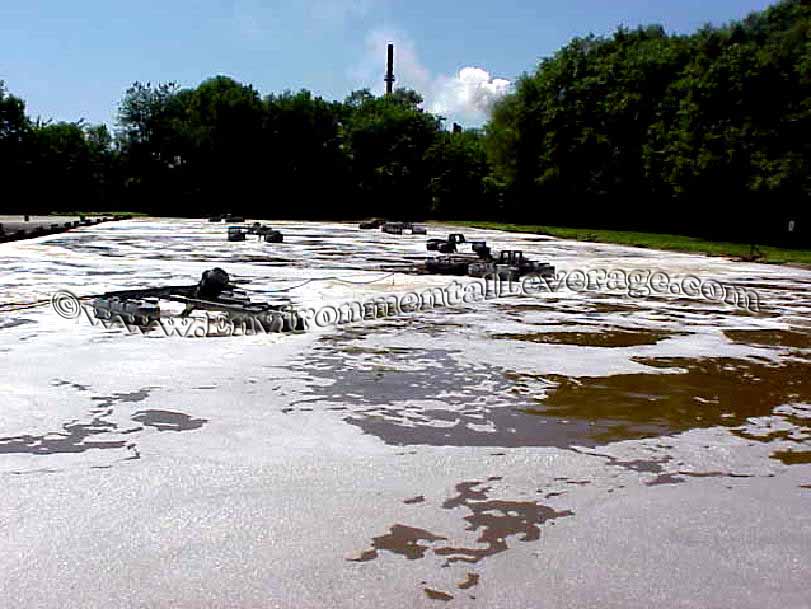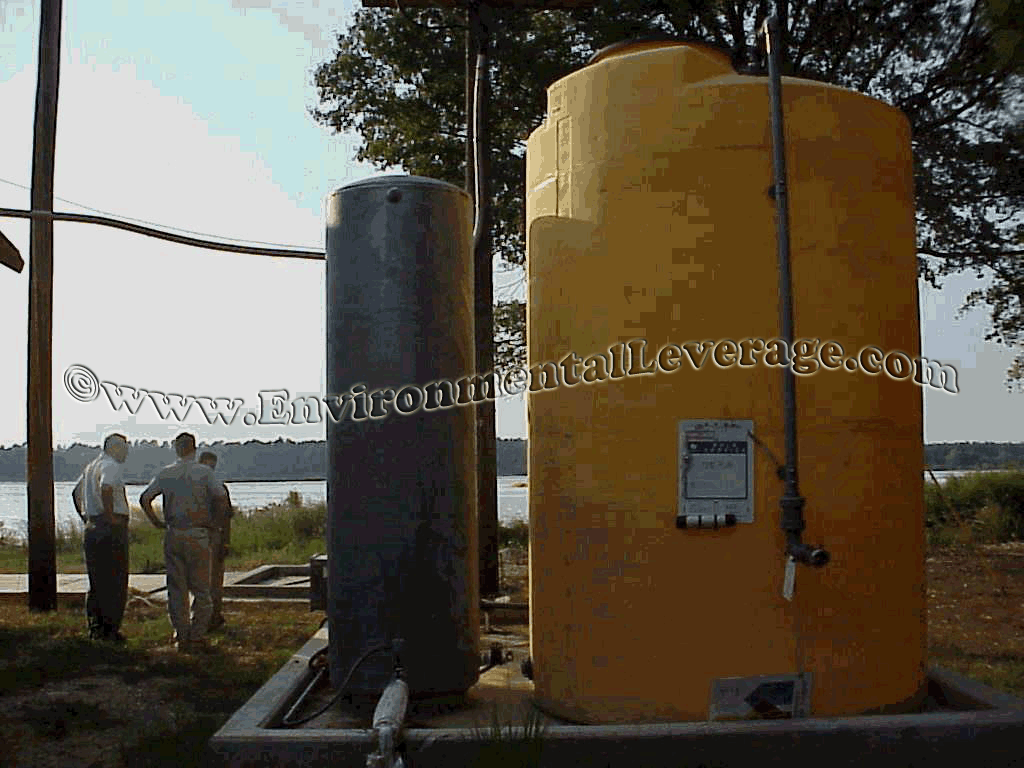Biological Products:
Bioaugmentation products for Wastewater applications in Papermills, Refineries, Chemical, Tanneries, Municipalities, Textiles, Steel, Agriculture, Animal feedlot, Gun Powder plant, Food and Beverage- Dairy Products, Orange Juice factory, Wineries, Cookie factory, Vegetable processing plant, Meat packing, Barbecue Restaurant, Aquaculture, Ornamental Ponds with algae , CAFO, Nursing homes, Military, Campgrounds, Universities, Regulatory agencies, River and Lake remediation
Lab Services:
Filamentous Identification Lab Service. One reason to identify filaments is to determine the filaments characteristics and then determine the type present. If the type is found out, a root cause can usually be associated with a particular filament. If the cause is known, then a correction can be made to alleviate problems. Chlorination is only a quick fix. Without process changes, filaments will grow back after chlorination. Wastewater Biomass Analyses and Cooling Tower Analyses also available
Training Materials:
Training is an integral part of any job. Not everyone is at the same level of training. Many people want beginning concepts and basics. Some need technical information or troubleshooting. Some want equipment, technology or process information. We have developed a full set of Basic training, Advanced training, Filamentous Identification the Easy Way as well as custom training CD's Manuals. We also provide hands-on training classes and soon will have an Online "E-University".
Audits and Consulting:
At Environmental Leverage® Inc., we have a team of experienced individuals who come into your plant with a fresh pair of eyes. The system is checked from influent to effluent. System optimization, equipment efficiency and operational excellence are key components explored. Key Benefits Equipment efficiency Total Cost of Operation reductions Reliability and safety An onsite audit is conducted to examine system parameters, process controls, and current monitor and control procedures. A physical walk-through is conducted, process flow diagrams are examined, previous design criteria are examined and current standard operating procedures are evaluated along with data logs.
|
Troubleshooting Wastewater LagoonsLatest News!
What's New!
We have just added "Virtual Audits" to our capabilities. Check out our new Services. We are in the process of developing new courses for our ""Online E-University" in order to meet the needs of our global customers that cannot travel to our public classes.Visit our new website www.WastewaterElearning.com/Elearning
Lagoon Wastewater issues from colder temperatures.
Wadtewater treatment Lagoons come in all different sizes and shapes. Many different types of industries and municipalities have once through lagoon systems. Some pulp and papermills have wastewater treatment lagoons that are over 36 acres! Some papermills have 40 million gallons a day flowing through their wastewater plant! Aerated lagoons or stabilization ponds often times have problems with BOD removal efficiency in the fall and winter due to their size and surface area.
For every 10 degree F◦ temperature change, there is one logs growth difference in biological activity. As temperatures drop, it is harder for the bacteria in the lagoons to keep up with the BOD. Again, that time and numbers game comes into play. Since you cannot change the time, and you do not have a RAS to play with, the only thing many plants with lagoon systems can do is supplement with bacteria products. Bioaugmentation is actually a cheap solution to BOD and TSS problems if applied correctly. See Papermill Case History
Papermill wastewater lagoon Refinery wastewater lagoon
Gunpowder wastewater lagoon Vegetable processing wastewater lagoon
Equalization pond, but isn't that just supposed to equalize the flow and influent components? These EQ ponds are not sterile. There is plenty of food present for the bacteria. There are many bacteria present. Just make sure the "Critical 5" are present: pH, N, P, temperature and D.O. are in the correct range, and you can easily get quite a bit of degradation in your EQ tanks or ponds depending upon your holding time. Many times these are considered a wide spot in the pipe, when in reality they can also be a good place to jump start your biological activity. Most of the bacteria present have a 20 minute to 2 hour life span, so there usually is quite a bit of holding time as far as bacteria are concerned.
Many plants overlook the importance of the EQ, allow solids to build up in there, do not pay attention to D.O. and let them turn septic. They basically shoot themselves in the foot by creating a septic influent that make it harder for the bacteria to work on in the aeration basin. Do not overlook this critical piece of equipment in a system.
The larger the wastewater pond, the more time you are giving the bacteria to work on the incoming food. But, the problem is, that the more surface area you have, and the further away you are from the incoming influent, the more the temperature can drop in the winter months. Cold weather can easily impact your "Critical 5".
Although oxygen transfer efficiency increases in cooler temperatures, biological activity slows down. This slowdown in activity can be a serious problem for some plants. Surface aerators also throw the water up many times 1-2 feet into the air, again allowing the water to significantly cool down. While this is a good thing in the summer months, when it can get very hot, it can be a detriment in the winter when the biological activity has already slowed down.
Papermill Wastewater Lagoon Chicken farm for Eggs- over 2.2 million chickens on this farm!
So how do you get around the fact that you are losing the time and numbers game in a once through lagoon but still need to meet your permits on BOD removal?
**Bioaugmentation Programs include technical support, computer based training and long term programs include occasional free Wastewater Biomass Analyses of your system.
Biofeeders for the use of bioaugmentation in Papermills What are biofeeders and why would a plant want to use them? Since
wastewater in the winter months more than any time becomes a time and
numbers game,
Dual programs with bacterial supplements and micronutrients can also significantly cut back on the dosage of product required to help meet discharge permits. The correct amount of nutrients as well as micronutrients can make or break a bacterial program. Control of the "Critical 5" is also very important.
Dredging a Lagoon Lagoons are designed to last a specific time before typical dredging is necessary. Bioaugmentation and biological programs for sludge reduction can help decrease the need for dredging but sooner or later, almost all lagoon systems need to be dredged.
Dredging at a 450 acre lake Dredging at a Papermill lagoon
More Wastewater Training Troubleshooting on Lagoons Case history of a papermill using our Bioaugmentation Programs
More on Papermills:
Troubleshooting Lagoon Systems
|





